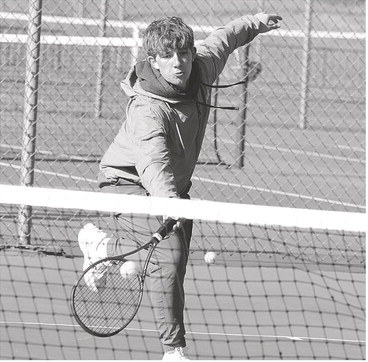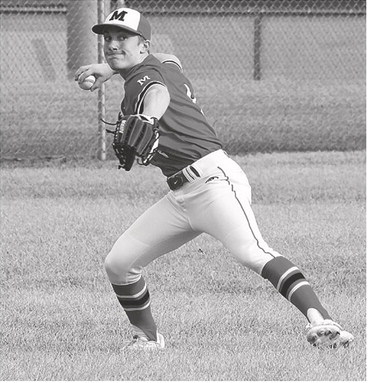WIAA gives schools option to switch fall sports to spring
The fall prep sports season will go on for schools and teams able to do so, but an option to postpone fall sports to spring also was approved on Aug. 14 by the Wisconsin Interscholastic Athletic Association’s Board of Control.
The unanimous 11-0 vote results in four distinct seasons being jammed into the 2020-21 school year that is now underway with the starts of girls swimming, girls tennis, girls golf and boys and girls cross country this week and ends the week of June 28 with the conclusions of the baseball, softball, girls soccer and track and field seasons.
Called the “Alternate Fall Option-Spring/Winter Reduced” model, it was the model out of six created by WIAA staff that those staff members felt would best accomplish the goals of creating athletic opportunities amid the COVID-19 pandemic while limiting overlap of sports seasons within the school year and limiting an extension of prep sports into the summer of 2021.
“We tried to look at every concern, every option,” WIAA assistant director Stephanie Hauser said. “We’ve shared with the board specifi cally the pros and cons from our staff. We know that none of these will be ideal but wanted you to have a lot of things to talk about today.”
“As staff has deconstructed all of these things, our opinion is that the very first model that you looked at, that alternate fall option with spring/ winter reduced is likely the most doable, most feasible course of direction,” WIAA executive director Dave Anderson said.
Prior to approving the one-year changes to the sports calendars, the Board of Control approved a lengthy list of COVID-related accommodations to WIAA rules aimed at providing flexibility to member schools during what will be a unique school year. One of those items requires schools to declare by Sept. 1 if they plan to participate in the traditional fall sports season or the alternate fall season. Schools may move all fall sports to the alternate spring season or specific sports.
The Sept. 1 declarations will help WIAA staff start to determine what post-season tournaments, or “culminating events,” will look like and will help schools determine what schools they can schedule events with.
Another of the COVID-related accommodations defi nes what will constitute a season if schools and teams are forced to shut things down due to illness issues. Football programs unable to start or complete 50 percent of the fall season, including games and practices, are eligible for a prorated alternate season. Other fall sports unable to start or complete 50 percent of the fall season, including games and practices, are eligible for a complete alternate season. Fall sports programs exceeding 50 percent of their seasons will be considered to have completed their season and cannot compete in the spring.
Season dates
In a special meeting July 23, the Board of Control had already delayed the starts of all fall seasons except cross country, which began Monday on its originally-scheduled date. Football, boys soccer and volleyball programs may begin practicing on Sept. 7. Fall seasons will end on their originally-scheduled weeks, but how those seasons will end is still to be determined. Girls golf ends the week of Oct. 12, followed by girls tennis the week of Oct. 19, cross country the week of Oct. 26, volleyball and boys soccer the week of Nov. 2, girls swimming the week of Nov. 9 and football the week of Nov. 16. WIAA staff pledged last week to disclose plans for culminating events about 30 days prior to the scheduled end date of a sports season. Winter sports seasons will be shortened by three weeks with the exception of gymnastics, which will be reduced by two weeks. For safety reasons, gymnastics requires more practice time than other sports prior to first competitions.
All winter sports will start one week later than originally planned. Boys and girls hockey, girls basketball and gymnastics can start practicing on Nov. 16. Boys basketball, boys swimming and wrestling teams may start Nov. 23. Boys swimming will already be completed the week of Feb. 1, followed by hockey and wrestling the week of Feb. 15, girls basketball and gymnastics the week of Feb. 22 and boys basketball the week of March 1.
The alternate fall season will kick off with the first girls swim practices on Feb. 15, volleyball on Feb. 22, football and girls tennis March 8, cross country on March 15 and boys soccer on March 22. End dates include the week of April 5 for swimming, the week of April 12 for volleyball, the week of April 26 for girls tennis, the week of May 3 for football and cross country, the week of May 10 for boys soccer and the week of May 17 for girls golf.
Alternate fall seasons would provide seven weeks of competition and the alternate football season has no culminating event.
“We tried to stagger those alternate fall seasons to minimize the amount of overlap of shared athletes as possible and pull those things up a little further into winter that we could play indoors,” Hauser said. “Some of those things that are outside, we pushed them down a little further.”
Most spring seasons will be shortened by two weeks with the exception of girls soccer, which will be clipped by three weeks. All spring seasons will start noticably later than normal.
Track and field, baseball, softball and boys golf all have April 19 start dates, while girls soccer starts on April 26 and boys tennis won’t start until May 3. Golf ends the week of June 14, tennis ends the week of June 21 and the rest end the last week of June.
School districts that use the alternate fall option will decide locally how to handle student-athletes competing in overlapping sports. Those who don’t use it will experience a lengthy gap of about two months between the end of winter and the start of spring.
The alternate option found favor in several large cities around the state with Green Bay, Appleton, La Crosse and Eau Claire school districts among those quickly jumping on board and announcing shortly after the Aug. 14 meeting they were postponing their fall sports to spring.
“We wanted the board to recognize that staff heard the concerns that were shared at the end of July,” Anderson said. “Consider the overlap, consider the run-on, consider the conflicts in some schools where kids are multi-sport athletes and those sorts of things. Recognize the fact that the more we go into July, the more we intrude upon other programs. We have heard many fears expressed by some members, some coaches, many parents and some athletes that don’t forget the spring sport athletes who have already been deprived of one season and now pushing them into summer. Now we’re forcing them to choose between their other summer programs and opportunities or summer jobs and family plans. The staff has worked every day to develop ideas and models and options.”
Other models presented to the Board of Control included a 10-week model for winter, alternate fall and spring that would’ve started winter in early December and ended spring in mid-June and second-semester eight-week and 10-week models. These models would’ve started winter in the first week of January. The eight-week seasons for winter, alternate fall and spring would’ve ended the athletic year in late June. The 10-week model would’ve taken spring into late July. The Southwest Wisconsin proposal would have flipped fall to spring and spring to fall. WIAA staff also drew up a Winter-Spring-Fall 10-week model that would’ve started alternate volleyball early in February and pushed alternate cross country and boys soccer into late spring and summer.




